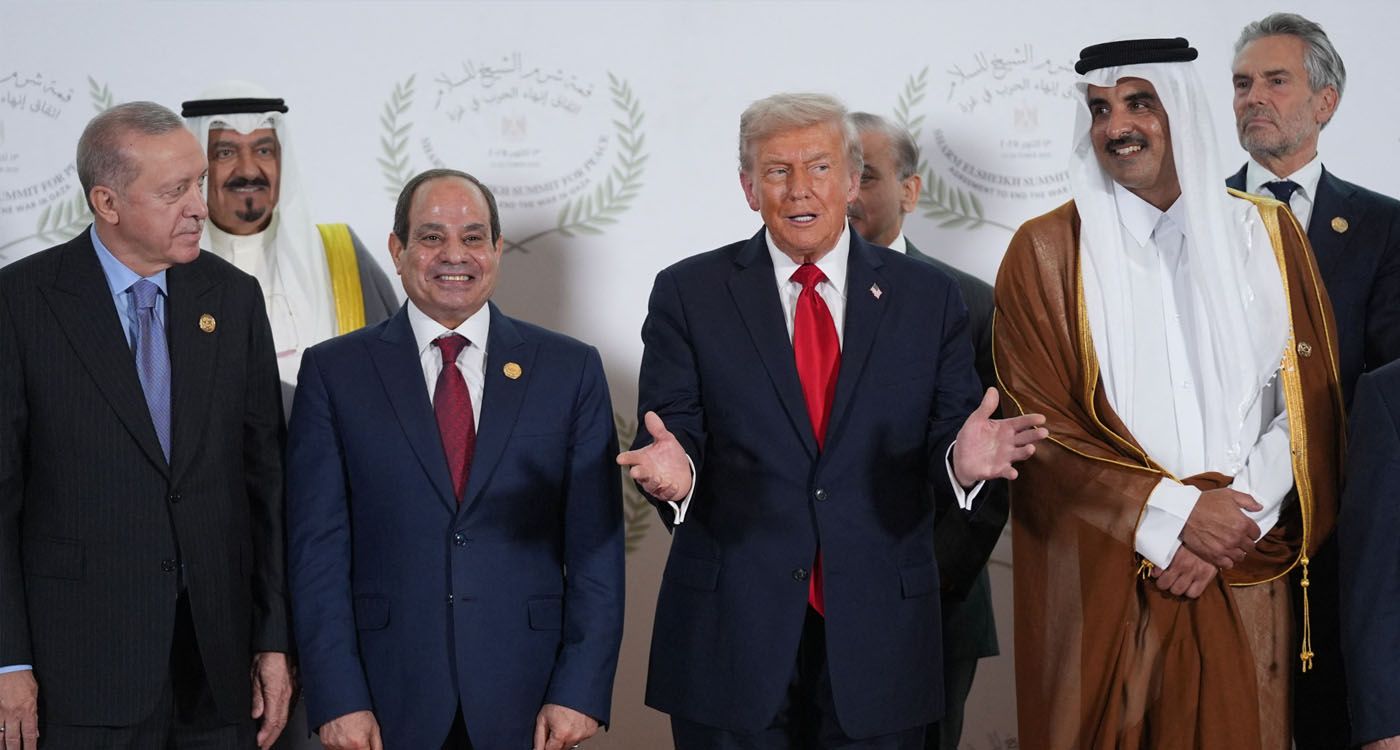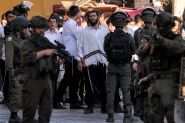- Home
- Arab World
- Sharm al-Sheikh: A Statement to Turn the Page on War

©Evan Vucci/Pool/AFP
The international summit held on Monday in Sharm al-Sheikh, Egypt, marked a diplomatic turning point regarding the Gaza conflict.
This was not just a simple agreement between Israel and Hamas. It was a solemn declaration co-signed by the mediator countries, Egypt, Qatar and Turkey, along with the United States.
The document, presented as the “Trump Declaration for Enduring Peace and Prosperity,” comes in support of a ceasefire that was agreed upon just a few days earlier. Its aim is to give the truce a firmer foundation, with international guarantors and commitments that go beyond a mere halt to hostilities.
According to the signatories, the declaration seeks to open a “new chapter” for the region, one grounded in hope, security and prosperity.
Neither Israel nor Hamas appear as direct signatories, highlighting the initiative’s largely diplomatic and symbolic character rather than its status as a binding treaty.
What the Declaration Commits To
The signatories reaffirm their support for the previously reached peace initiative, emphasizing the suffering caused by years of conflict and the urgent need to end prolonged hostilities.
They pledge to act as guarantors of the declaration’s implementation, ensuring stability and establishing monitoring and oversight mechanisms.
Humanitarian concerns are among the most pressing. The declaration calls for easing access to aid in Gaza, rebuilding destroyed infrastructure, and stabilizing living conditions for residents after years of war.
It also stresses the need to move forward with all phases of the declaration, including the gradual withdrawal of military forces, the exchange of hostages and prisoners and the establishment of a credible ceasefire.
At the same time, the text stops short of explicitly recognizing Palestinians’ right to self-determination or the establishment of a Palestinian state.
Limits and Lingering Questions
At the signing, excitement was mixed with caution. A key challenge is that the declaration relies heavily on the goodwill of the parties and the ability of the guarantors to enforce its terms in case of non-compliance. With neither Israel nor Hamas signing directly, the document’s legal weight is limited.
Critical questions remain unanswered. How will Hamas’s disarmament be enforced? What form will Gaza’s administrative authority take? How can disarmament, troop withdrawals and security be balanced? And how can humanitarian aid and reconstruction be safeguarded from political exploitation?
An Uncertain ‘New Era’
At the signing, many saw it as the start of a “new chapter” in the Middle East. Egyptian President Abdel Fattah al-Sisi called it a “last hope” for peace.
The Trump plan, which the declaration closely follows, was presented as an ambitious twenty-point roadmap. So far, only the first phase, the ceasefire and the exchange of hostages for prisoners, has been implemented.
What gives the Sharm al-Sheikh document both its strength and its fragility is that it does more than stop the fighting. It sets out milestones for lasting peace with international guarantors and multilateral commitments.
The coming months will be critical in determining whether the declaration can live up to its historic potential through progress in security, governance and reconstruction.
Read more





Comments